We’re now just two weeks away from the opening of unrestricted free agency.
We’ll soon take a look at the external options that might fill a need for the Maple Leafs in the UFA market, but we first have to cover the decisions to be made on the expiring contracts currently on their NHL roster, of which there are nine in Toronto among the UFA class.
In Part 2 coming out on Monday, we’ll take a look at the two biggest names among this cohort in Ryan O’Reilly and Michael Bunting (as well as David Kampf and Alex Kerfoot). For now, let’s start with some of the lesser lights that may or may not be Maple Leafs beyond July 1.
Zach Aston-Reese
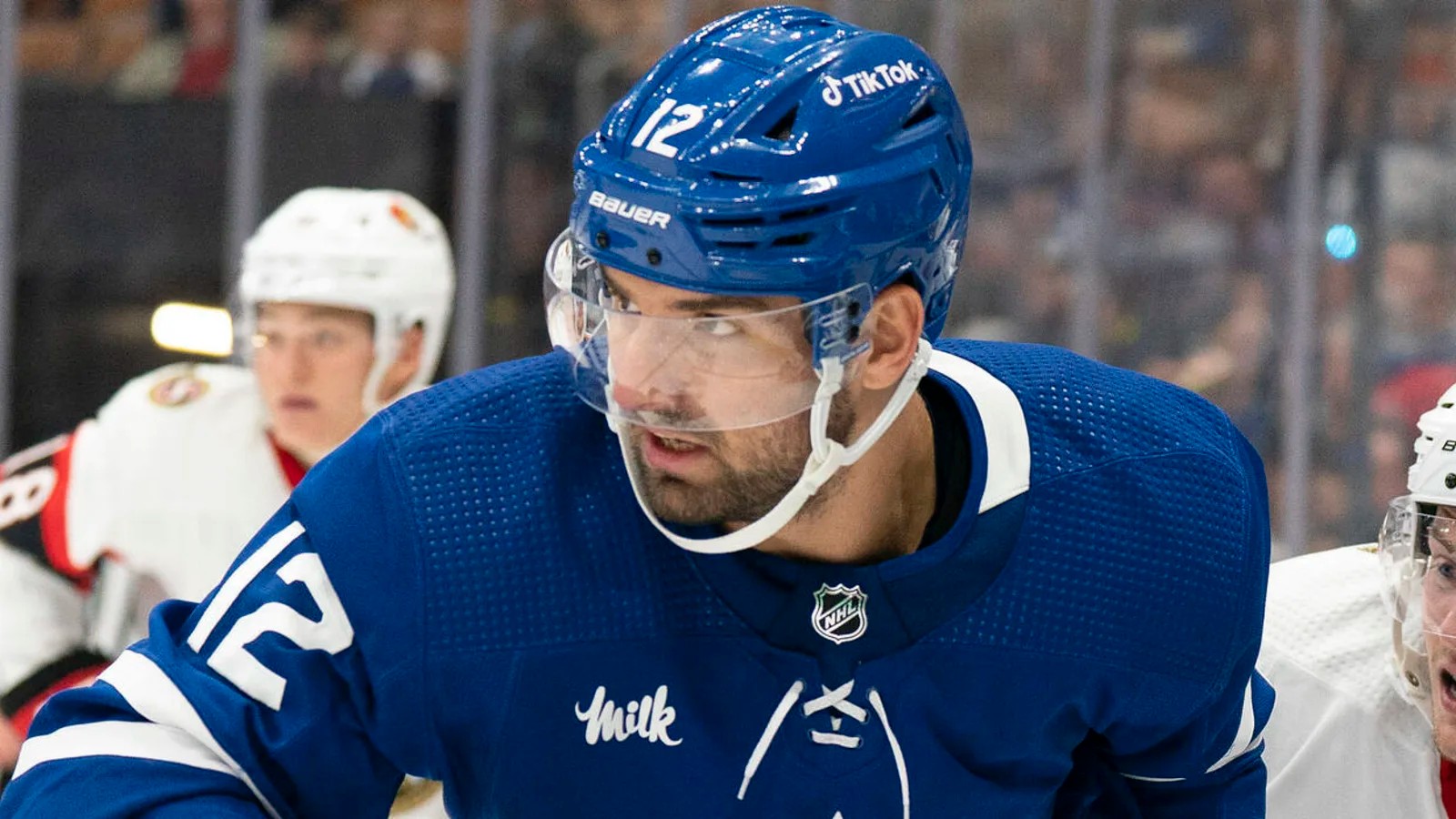
ZAR was a free agent signing last offseason on a one-year, $840,630 contract. Aston-Reese was brought in originally to play on an all-defense fourth line with David Kämpf and the short-lived Nicholas Aube-Kubel, a line that was atrocious before it was broken up.
Kämpf was bumped up to the third line and ZAR stayed on the fourth line, logging 77 games at 10:56 ATOI for the Leafs. He scored 10 goals and four assists for 14 points, a surge that mostly came late when he racked up five goals in the last 15 games. ZAR played in six playoff games as well, scoring one goal and one assist for Toronto.
The upside to Aston-Reese is he is a tremendous “absolutely nothing happens while I’m on the ice” player, the idyllic fourth liner for the kind of team Kyle Dubas tried to build in Toronto. ZAR was the logical winger to go after when the GM has already signed David Kämpf to be a heavily-used center and traded for Riley Nash previously. Dubas had an affinity for these sorts of players and for a time, no one was more fondly talked about in the analytics community for being a king of the 0th percentile offense, 99th percentile defense among forwards than Zach Aston-Reese. In Toronto, we got that. The Leafs were rarely scored on when ZAR was out there, but there was also a 39-game stretch where Aston-Reese played over 10 minutes per night and scored three total points.
ZAR’s next contract is likely to be much like this last one: one year and likely under $1M cap hit. He is who he is. He’s a 12th/13th forward on a good team and will be paid as such.
I’d like to see the Leafs under new management pivot away from players who have the profile of Aston-Reese, towards more offensively-minded, high-energy fourth-liners. Thus, I’d prefer to see the team go in a new direction, but it’s entirely plausible that he is brought back. Whoever replaces ZAR won’t be making much more money (if more at all). It’s all about the taste of the GM running the show.
Noel Acciari
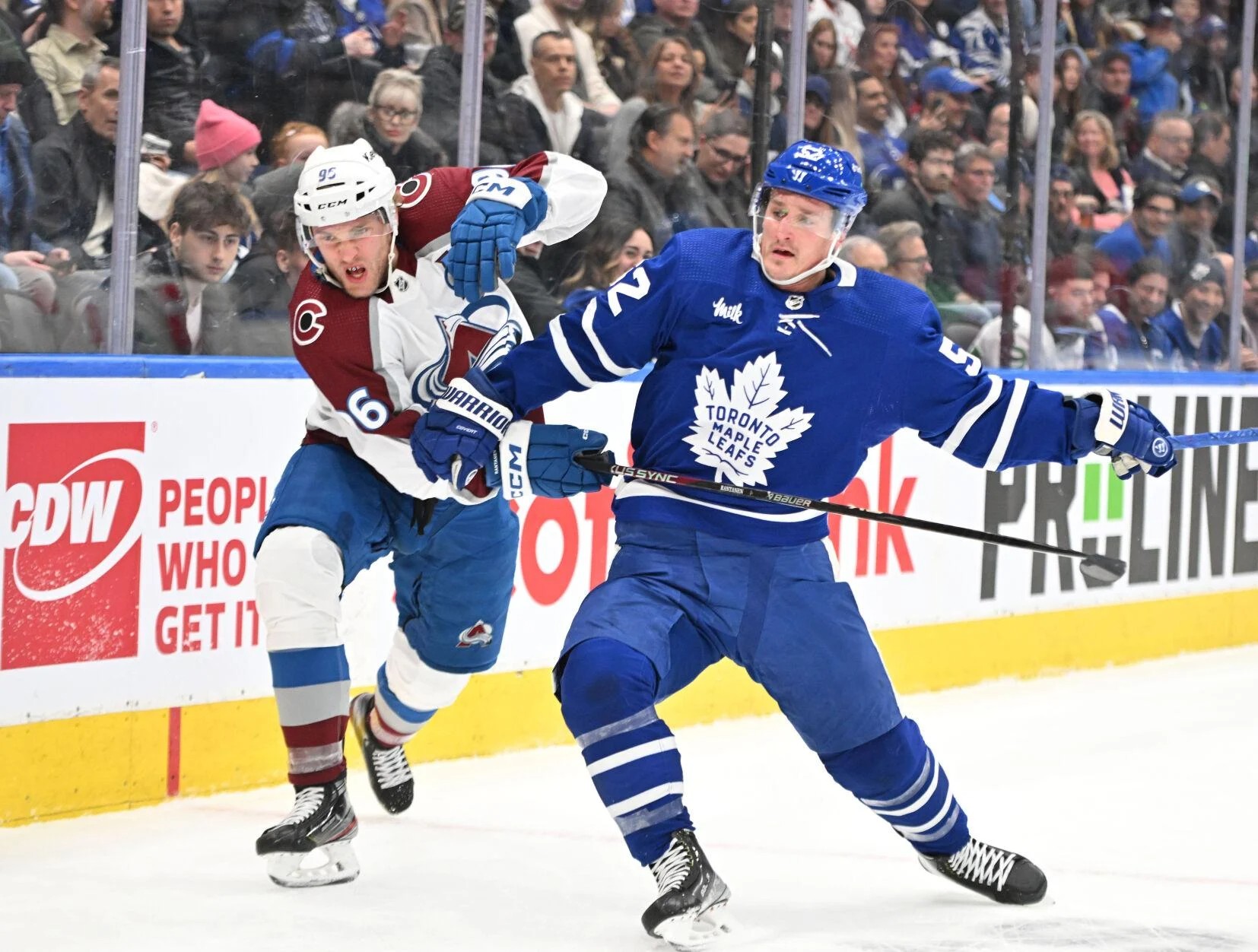
The second piece of the Ryan O’Reilly trade, Acciari was a bottom-six add by the Leafs in an attempt to give the rear of their lineup more bite. Acciari, a 31-year-old veteran, did exactly that. He finished every single check in the postseason, racking up 78 hits in just 11 games(!!!), while playing 14:57 per game and becoming a fan favourite.
Acciari didn’t contribute all that much in the way of offense, scoring four goals in 23 games in the regular season after the trade and two in 11 playoff games (they were both important goals, though), but his energy, hustle, and hitting won the hearts of fans. Now he hits the open market and the Maple Leafs have a decision to make.
Acciari has his upside as a stellar defensive player who can feature heavily on the kill, can play wing or center, and can alternate between strong and poor finishing seasons. This year was a strong finishing year; he scored 16 goals in total between the regular season and playoffs in St. Louis and Toronto combined. That’s solid production for a bottom-six player, especially when you also get the defense and the physicality.
However, Acciari offers almost nothing in the way of playmaking. He tallied one assist in 34 games for the Leafs combining regular season and playoffs, and that’s not far off from his career norm. He’s also not a supreme play-driver, nor is he a great skater.
Acciari is a trusty veteran who is useful. If you brought him back on a cheap (say $1.5M) one or two-year contract, I wouldn’t protest. This one seems more up in the air, and the reality is that fourth-line players are marginal cases. The chance you knock it out of the park is low, but the chance you majorly damage your team by messing it up is also very low.
Justin Holl
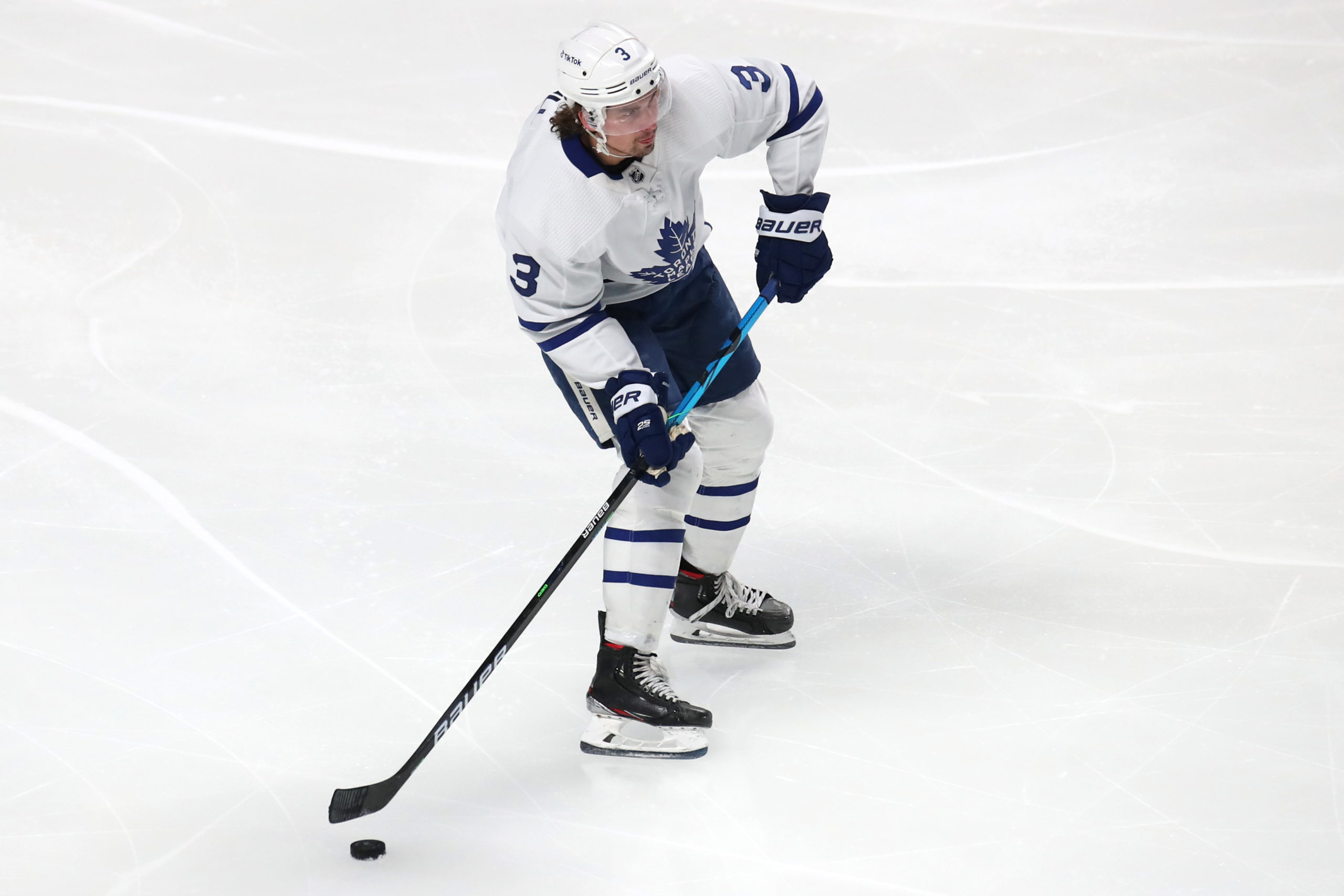
Now we’re onto the Leafs’ three UFA defensemen. First up is the infinitely talked about Justin Holl, the defenseman version of Alex Kerfoot as a controversial but largely pedestrian player who at times was discussed more frequently than the star players on the team.
For two seasons, Holl was the whipping boy for much of the fanbase, a designation I defended from him often (at times) before his play completely fell apart in the 2023 postseason. Holl is a fascinating player in some sense, giving you good production at a very affordable price when he’s at his best. But when he’s off his game, Holl can look like a donkey on skates, making mind-numbing decisions that make you want to put a hatchet through the television. Hence the ire of the fans.
The reason the Leafs liked Justin Holl is simple: When paired with a partner who can drive a pair, a healthy Jake Muzzin or TJ Brodie, Holl can shoulder tough assignments and eat significant minutes (he averaged >20 minutes three straight seasons), posting good results while doing it. The fact he could do all of that from the right side, with a cap hit of just $2M, is why the Leafs protected him in the expansion draft. At his best, Justin Holl was on a steal of a contract, providing the team with great value. His three-year Evolving Hockey player card demonstrates this:
He generally won his minutes (which were not sheltered), played huge amounts on the PK, and did it all for a shockingly low cap hit given the premium position he played (RHD). That’s the Holl I defended, even through his tendency to commit the One Big Mistake. I, a long-time Holl defender, will admit that his blooper real is as hilarious as it gets. Even when he was on his game, #3 was always game for a couple of zero-IQ plays that make you wonder if he was recently lobotomized.
But that’s not the “make or break” with Justin Holl. Even at his best, he did dumb stuff and you had to live with it. The “make or break” is what happens when Holl doesn’t play with a big-time partner. We saw it twice over Holl’s time in Toronto when his once prodigious partner suddenly entered a steep age-related decline. In both cases — first with Jake Muzzin in mid-2021-22 and then with Mark Giordano in the 2022-23 playoffs — Holl’s numbers plummeted.
Holl is a complementary defenseman who can thrive next to high-end players. But ask him to carry a pair next to a struggling partner and his game completely falls apart. That’s what happened in the playoffs this spring when Giordano’s game aged years in the span of just a few weeks, causing Holl to enter a free fall. His Game 5 showing against Tampa is one of the single worst games I’ve seen from an individual Leafs defenseman in the playoffs.
That was the moment it felt like his time in Toronto was up and when I felt it was time to make a change. The other truth about Holl is he’s a poor offensive defenseman, and as someone who would like to see Brad Treliving build a defense that is better able to move the puck up ice and move up in the play, Holl is not a stylistic fit for that. He’s also 31 years old, and although his relatively limited NHL experience will likely blunt his aging curve some, it’s definitely something to keep an eye on and be weary of when the projected contract from Daily Faceoff is 3x$3M.
It feels like Holl probably needs a fresh start and the team can also benefit from going in a different direction. The legacy of Holl in Toronto is likely to sell his abilities far short of what they actually were, but a clean slate is needed here and rumors are that such a fresh start is likely.
Erik Gustafsson
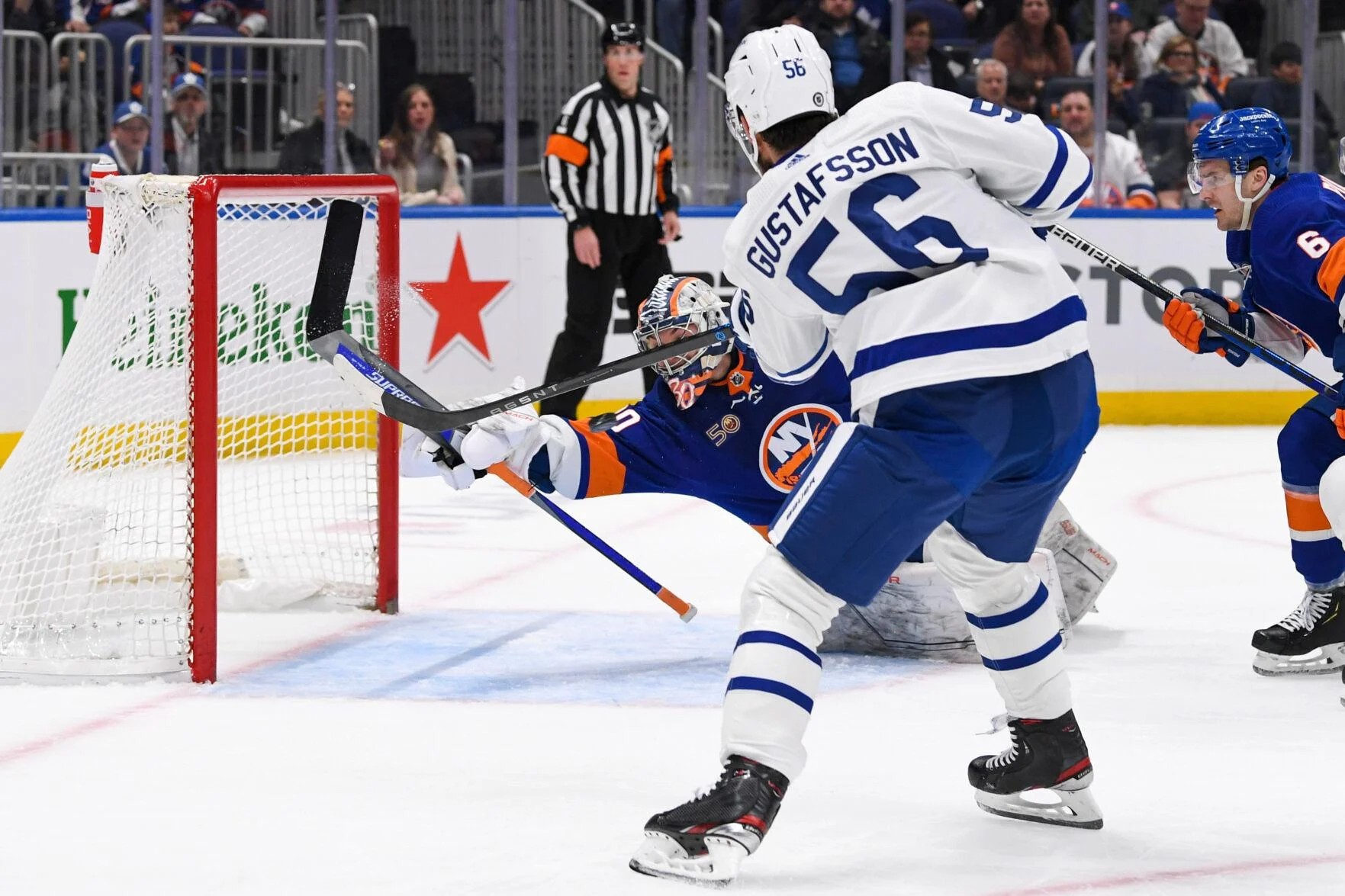
The first of two defensemen that the Leafs picked up at the trade deadline, Erik Gustafsson came to Toronto in exchange for Rasmus Sandin, but he played only 11 total games with the Maple Leafs between the regular season and playoffs. The Leafs were jam-packed with D and Gustafsson was not high on that depth chart, subbing in mostly when the team went 11/7. He scored four assists in the regular season and then a playoff goal in G3 against the Panthers, but Gustafsson’s contributions were limited and he played barely more than 10 minutes on average over the two playoff games he appeared in.
Gustafsson has had a nomadic NHL career to this point, playing for six different teams in just seven NHL seasons. He’s had great stretches — including 60 points in Chicago in 2018-19 and 38 points in 61 games in Washington this past season before the trade — but there’s always been a reality that’s underpinned his performance, one that indicates that Gustafsson is not a true top-four defenseman. He’s an undeniably talented offensive defenseman, a stellar puck-mover, and a reasonably effective PP QB, but his high-event, rollercoaster style and perceived defensive liabilities have relegated him to second or third-pair duty and squeezed him out of the lineup in Toronto during the playoffs.
Gustafsson plays the style of hockey that I would like to see the Leafs add more of to their defensive group, but I don’t think Erik Gustafsson is the one to do it. This is a player who was the least-used skater (in ATOI) on the 2021 Habs team that made the Stanley Cup Final for a reason and he was scratched more often than he played with the Leafs for a reason. Gustafsson is more of a depth defenseman than an everyday guy, and when you already have Conor Timmins in that role (developing to perhaps one day become something as a puck-moving D), I don’t think you need to pay 31-year-old Gustafsson to fill it.
Gustafsson’s contract will likely be cheap, so it isn’t a high-stakes decision anyway, but my guess is he’ll aim to sign with a rebuilding team who can offer him more ice time. The Leafs will probably be okay with that.
Luke Schenn
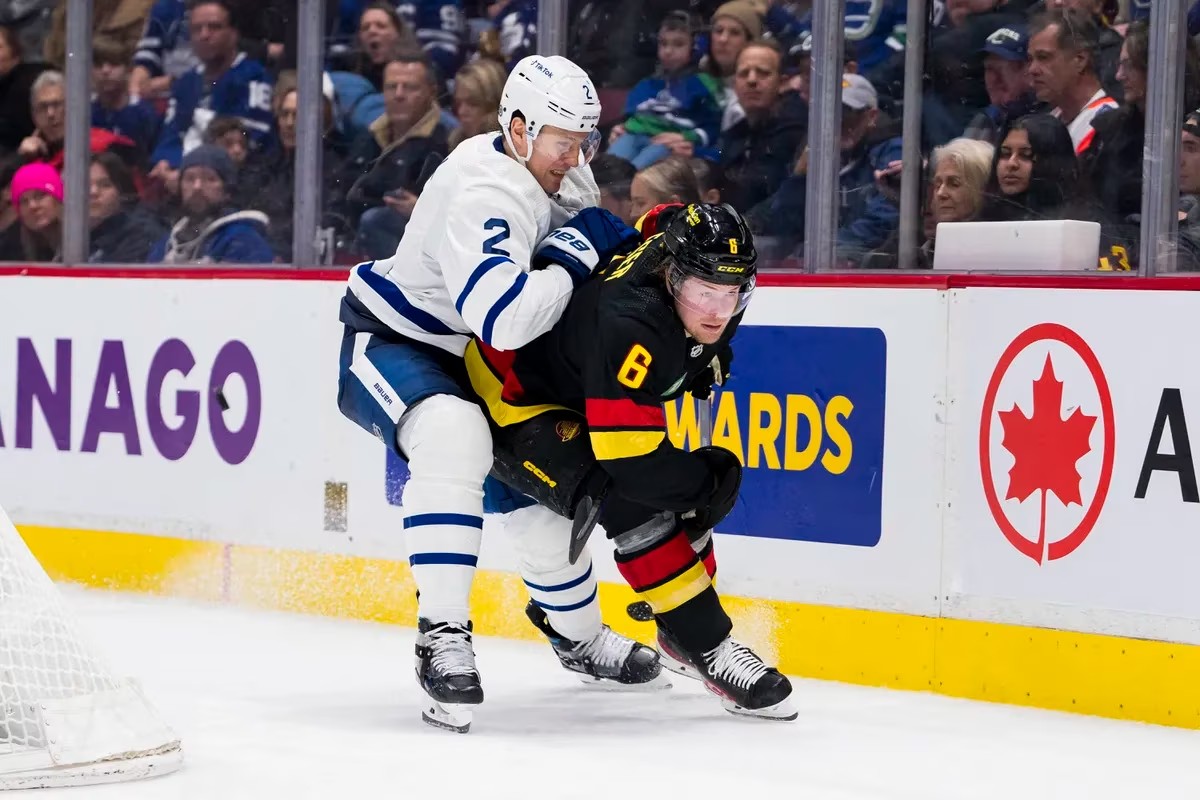
At last, we arrive at our final player, Toronto’s prodigal son Luke Schenn. A trade deadline pickup that many were skeptical of at the time, Schenn proved a lot of people wrong with his exceptional play in the postseason. His pairing with Morgan Rielly was far and away Toronto’s best, and despite puck-moving being considered a weakness of Schenn’s game, he was one of the steadiest defenders for the Leafs at breaking the puck out of the zone cleanly against the swarming forechecks of their playoff opponents. Combined with his heady defensive game and bruising physical style, Schenn was the surprise MVP of the playoffs for the Maple Leafs.
This has led a lot of fans to want Schenn back and also rumours that the organization is working to do so. I’ve got no problem with it. Schenn doesn’t really fill the hole of what I’m hoping to see the team add in the way of offensively-capable defensemen, but Schenn is a rock-solid player who will come pretty cheaply and likely on a short term deal as a player who turns 34 in the fall. His veteran presence and championship experience are valuable, and the chemistry shown with Rielly can’t be ignored.
If the Leafs are letting Holl walk, keeping Schenn as an RHD makes a lot of sense just to maintain some stability. On a contract under $2M, I would be very comfortable bringing Schenn back after what he showed us against two of the best offensive teams in the league in the playoffs. The booming hits add an element and are such fun, and plus, the narrative of the one-time Leafs draft pick is hard to pass up. If Schenn were to walk, it wouldn’t be the end of the world, but I would prefer to see him stay and there should be common ground to hammer out a deal.





















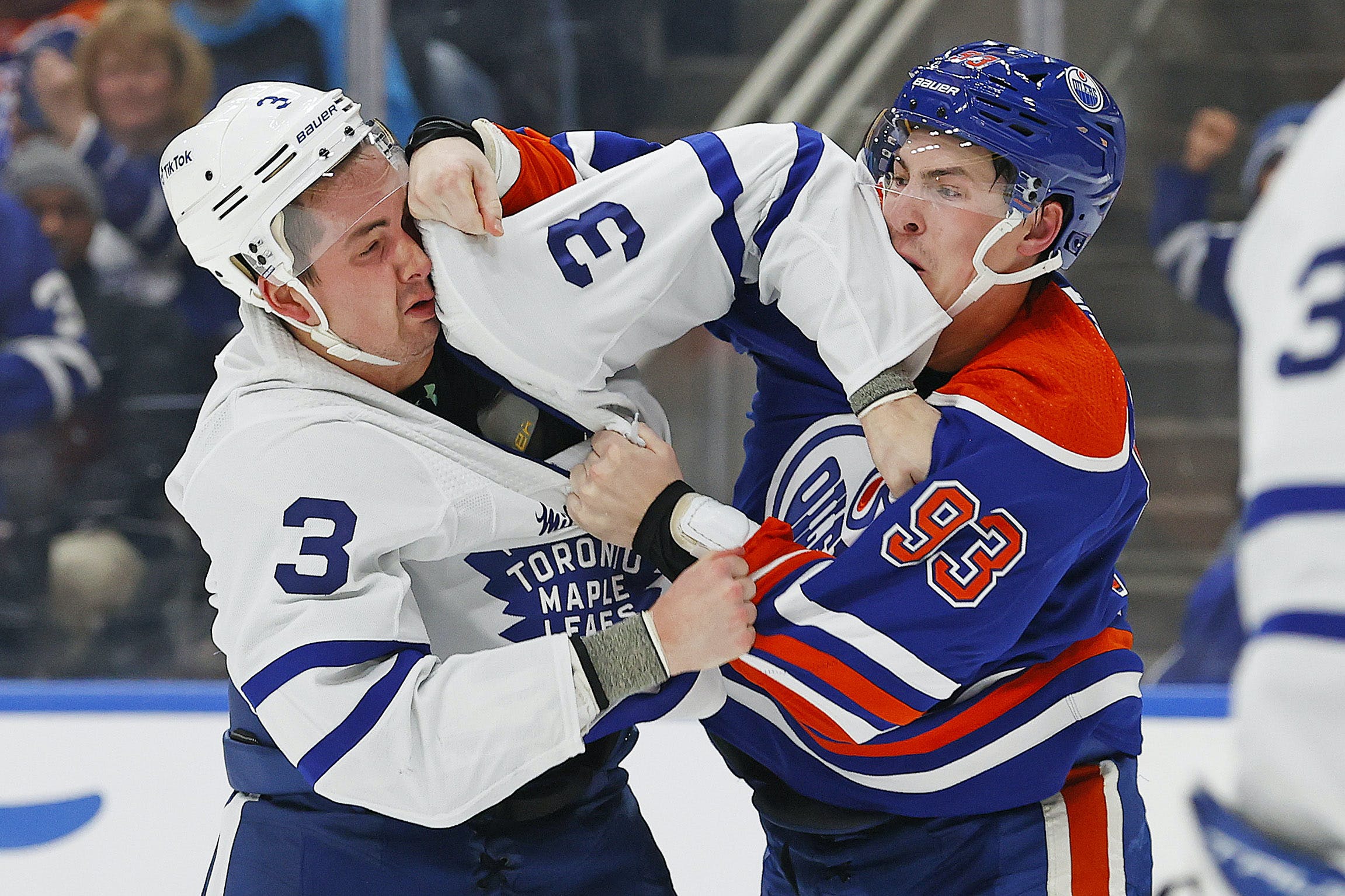
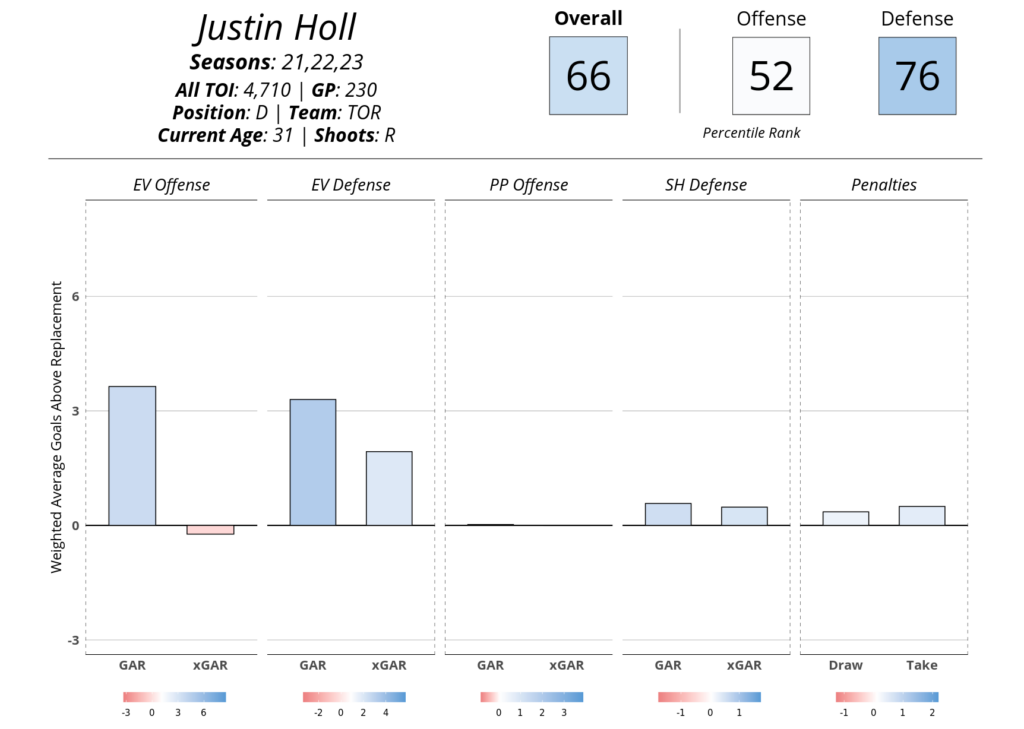








![New Leaf Anthony Stolarz on the opportunity in Toronto: “In Florida, I knew my role as a backup… Now, [Joseph Woll] and I are competing for starts… As a goalie, that’s all you can ask for” Anthony Stolarz, Stanley Cup win, now Maple Leaf](https://mapleleafshotstove.com/wp-content/uploads/2024/07/anthony-stolarz-sc-100x70.jpg)
